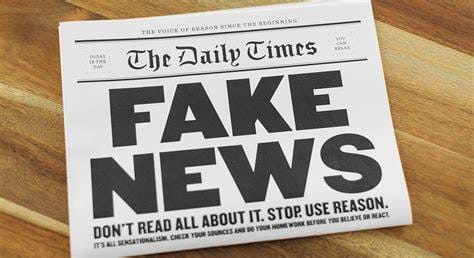In an era where information is power, the role of media as the fourth pillar of democracy has never been more critical. However, a disturbing trend has emerged: legacy media outlets often uncritically propagate fake headlines and narratives, seemingly fed by shadowy entities often referred to as the “Deep State.” This article explores how legacy media copies these fake headlines, forwards biased analyses to the masses, and the implications of this practice on public trust and democracy.
What is the Deep State?
The term “Deep State” refers to a clandestine network of unelected government officials, intelligence agencies, and powerful elites who allegedly manipulate government policies and public opinion to serve their own interests. While the existence of such a network is debated, its influence on media narratives is increasingly evident.
The Playbook: How Fake Headlines Are Created and Propagated
The process of disseminating fake headlines through legacy media follows a well-orchestrated playbook:
Step 1: Planting the Narrative
- Anonymous Sources: The Deep State uses unnamed officials or “insiders” to leak information to select journalists.
- Fabricated Stories: Sensational but unverified stories are crafted to push a specific agenda.
Step 2: Media Amplification
- Legacy Media’s Role: Outlets with established credibility, such as The New York Times, CNN, or BBC, pick up these stories without rigorous fact-checking.
- Echo Chambers: Once one outlet runs the story, others follow suit, creating a false sense of credibility through repetition.
Step 3: Shaping Public Opinion
- Biased Analysis: Pundits and analysts provide commentary that aligns with the narrative, often ignoring counter-evidence.
- Social Media Spread: The stories go viral on platforms like Twitter and Facebook, further entrenching the narrative in public consciousness.
Examples of Fake Headlines and Their Impact
Several high-profile cases highlight how legacy media has propagated fake headlines:
The Russia Collusion Hoax
- Headline: “Trump Campaign Colluded with Russia to Influence 2016 Election.”
- Reality: After a two-year investigation, the Mueller Report found no evidence of collusion.
- Impact: The narrative dominated headlines for years, damaging public trust in institutions and polarizing the electorate.
COVID-19 Misinformation
- Headline: “Lab Leak Theory is a Conspiracy.”
- Reality: The theory is now widely considered plausible, with even the FBI acknowledging it as a possibility.
- Impact: Early dismissal of the lab leak theory stifled scientific inquiry and fueled public distrust in health authorities.
Hunter Biden’s Laptop
- Headline: “Hunter Biden Laptop Story is Russian Disinformation.”
- Reality: The laptop’s authenticity was later confirmed, revealing significant ethical concerns.
- Impact: The media’s dismissal of the story raised questions about bias and censorship.
Why Does Legacy Media Play Along?
Several factors explain why legacy media outlets propagate fake headlines:
Access Journalism
- Journalists rely on access to powerful sources for exclusive stories. Criticizing these sources could jeopardize their access.
Corporate Interests
- Media conglomerates often have ties to political and corporate elites, creating conflicts of interest.
Confirmation Bias
- Outlets cater to their audience’s preferences, reinforcing pre-existing beliefs rather than challenging them.
Lack of Accountability
- The 24/7 news cycle prioritizes speed over accuracy, leaving little room for fact-checking.
The Consequences for Society
The uncritical propagation of fake headlines has far-reaching consequences:
Erosion of Trust
- Public trust in media has plummeted, with many viewing legacy outlets as mouthpieces for the elite.
Polarization
- Biased narratives deepen societal divisions, making constructive dialogue nearly impossible.
Undermining Democracy
- A misinformed electorate cannot make informed decisions, weakening the foundations of democracy.
What Can Be Done?
To combat this trend, several steps are necessary:
Media Literacy
- Educate the public on how to identify fake news and critically evaluate sources.
Independent Journalism
- Support independent outlets that prioritize investigative reporting over sensationalism.
Transparency
- Demand greater transparency from legacy media about their sources and editorial processes.
Accountability
- Hold media outlets accountable for spreading misinformation through fact-checking and public pressure.
Conclusion: Reclaiming the Truth
The legacy media’s reliance on fake headlines and biased analyses is a betrayal of its duty to inform the public. As consumers of news, we must remain vigilant, question narratives, and seek out diverse perspectives. Only by holding the media accountable can we reclaim the truth and safeguard democracy from the influence of the Deep State and other shadowy entities.
Let us not be passive recipients of information but active participants in the quest for truth.

2 thoughts on “How Legacy Media Copies Fake Headlines: A Deep Dive into the Deep State’s Influence on Mass Narratives”